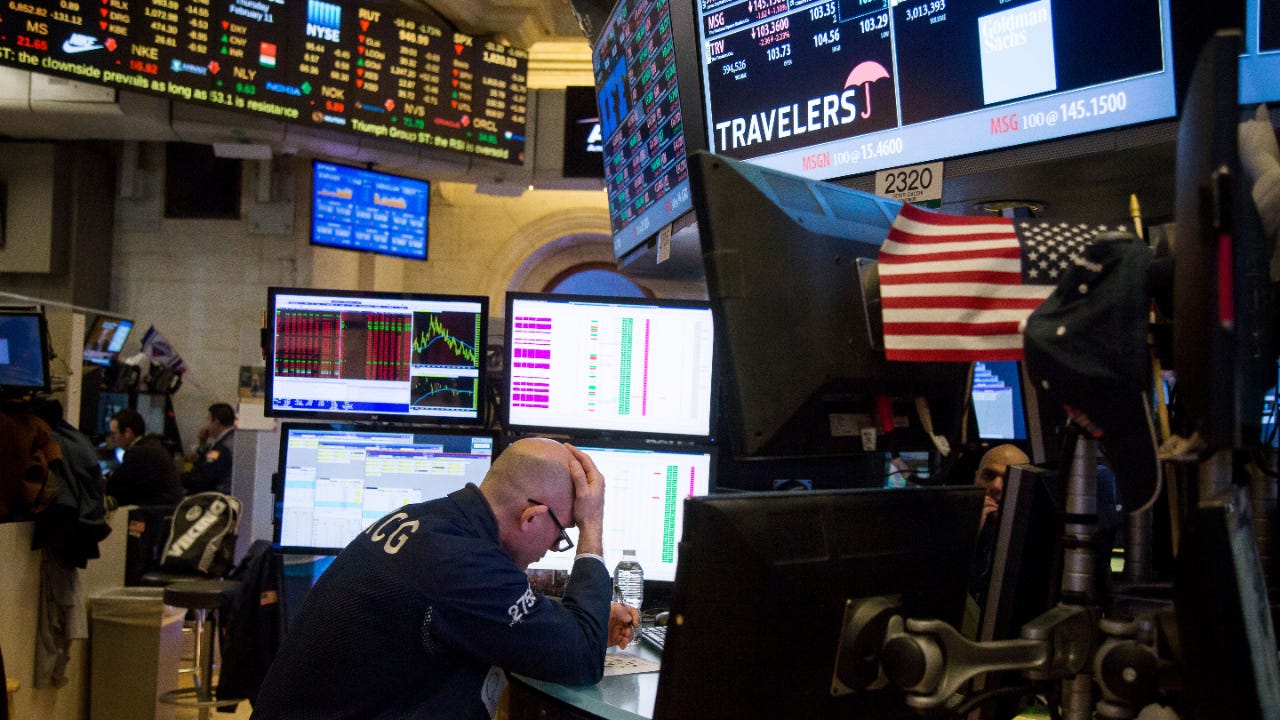The S&P 500 is in a bear market: How much lower could it go?

The Bankrate promise
At Bankrate we strive to help you make smarter financial decisions. While we adhere to strict , this post may contain references to products from our partners. Here's an explanation for .
In 2022 stock investors suffered their worst start to a year since 1970, with the S&P 500 falling 21 percent during the first half of 2022. The widely tracked stock market index fell into bear market territory on June 13 after closing more than 20 percent below its high reached in early January.
For investors, there’s been no shortage of things to worry about. Rising interest rates, high inflation, the war in Ukraine and a possible recession are just some of the risk factors that markets have focused on this year.
After the tumble into bear market territory, stock investors are trying to gauge how much lower prices may fall or if the worst is behind them. While no one can answer those questions definitively, looking at past bear markets may offer clues about how this one may unfold.
Past bear markets: Lessons from every bear market since 1929
Every bear market is different, but looking at data from bear markets from the past century may provide hints about what to expect going forward. In the table below, you’ll find data on every bear market since 1929, including the average decline and the length of time it took for the S&P 500 to reach its bottom.
| Peak date | Trough date | Percentage decline in S&P 500 | Number of days from peak to trough |
|---|---|---|---|
| 9/7/1929 | 11/13/1929 | -44.7 | 67 |
| 4/10/1930 | 6/1/1932 | -83.0 | 783 |
| 9/7/1932 | 2/27/1933 | -40.6 | 173 |
| 7/18/1933 | 10/21/1933 | -29.8 | 95 |
| 2/6/1934 | 3/14/1935 | -31.8 | 401 |
| 3/6/1937 | 3/31/1938 | -54.5 | 390 |
| 11/9/1938 | 4/8/1939 | -26.2 | 150 |
| 10/25/1939 | 6/10/1940 | -31.9 | 229 |
| 11/9/1940 | 4/28/1942 | -34.5 | 535 |
| 5/29/1946 | 10/9/1946 | -26.6 | 133 |
| 6/15/1948 | 6/13/1949 | -20.6 | 363 |
| 7/15/1957 | 10/22/1957 | -20.7 | 99 |
| 12/12/1961 | 6/26/1962 | -28.0 | 196 |
| 2/9/1966 | 10/7/1966 | -22.2 | 240 |
| 11/29/1968 | 5/26/1970 | -36.1 | 543 |
| 1/11/1973 | 10/3/1974 | -48.2 | 630 |
| 11/28/1980 | 8/12/1982 | -27.1 | 622 |
| 8/25/1987 | 12/4/1987 | -33.5 | 101 |
| 3/24/2000 | 10/9/2002 | -49.1 | 929 |
| 10/9/2007 | 3/9/2009 | -56.8 | 517 |
| 2/19/2020 | 3/23/2020 | -33.9 | 33 |
| Average | -37.1 | 344 | |
| Median | -33.5 | 240 |
Source: Yardeni Research
As you can see from the table, the average bear market since 1929 has resulted in a roughly 37 percent decline in the S&P 500 and it has taken an average of 344 days, or nearly a year, for the market to reach its bear market bottom.
If these averages were to play out during the current bear market, investors could expect the S&P 500 to fall to about 3,017, or a roughly 22 percent decline from mid-July levels. The average duration from peak to trough would mean the market could bottom in mid-December 2022, based on its peak of January 3, 2022.
But because every bear market is unique, it can be difficult to draw precise conclusions from history. What seem like obvious problems today may not be what matters most six months or a year from now.
In early 2000, investors were dealing with the final days of the tech bubble, but less than 18 months later, the September 11th terrorist attacks helped send the economy into a recession and the country into war. That bear market sent the S&P 500 down almost 50 percent over the course of two and a half years.
Other bear markets are shorter. In early 2020, as the world was coming to grips with the onset of a global pandemic, stocks tumbled more than 33 percent in just over a month before recovering sharply thanks to an unprecedented amount of federal stimulus spending to help keep the economy afloat.
What should investors do during this bear market?
While bear markets can be unnerving, investors should expect them. We are currently experiencing the 22nd bear market since 1929, so while they don’t happen frequently, they are definitely a normal part of being a long-term investor. Here are a few tips for how investors can handle the current bear market.
Avoid the urge to sell
When stocks are falling and your retirement account is losing value it’s understandable to want to sell your investments to stop the pain of losing money. But while that may feel good in the moment, and possibly look like a smart decision for a period of time, people who sell during bear markets rarely know when to get back in. Getting out and not getting back in is a decision that can cost you greatly in the long run.
Cash feels like a good investment during market selloffs, but it is actually a very lousy investment over the long term. Selling when the market is already down in order to hold cash is the opposite of the old adage “buy low, sell high.” If you have money invested in the stock market that you think you’ll need in the near future, then selling is the correct move, but other than that, it’s usually best to stick it out.
Think of it as an opportunity
For many long-term investors, bear markets end up being more of an opportunity than anything else. Bear markets are a great time to invest additional money into the market because prices have declined substantially, which allows you to get more value for your money.
This can be psychologically difficult to do, because it’s counterintuitive to invest when so many people are talking about the risks the economy faces. But when people are hyper-focused on these risks, they sell stocks, which can create bargain investments for stable-minded investors. As legendary investor Warren Buffett has said, “The future is never clear; you pay a very high price in the stock market for a cheery consensus.”
Consider rebalancing your portfolio
If you look at your investment portfolio in the midst of a bear market, you may notice that your asset allocations are a bit out of whack. You may have more than your desired exposure to bonds as a result of the stock market decline, or some stocks may have ballooned as a percentage of your portfolio if they have held up relatively well during the downturn.
Rebalancing your portfolio back to your preferred allocations is a sensible strategy and a good way to manage the portfolio’s risk. If an asset’s weighting is more than 5 percent away from your desired allocation, consider placing trades to bring it back in line.
Bottom line
While bear markets generate a lot of headlines and can be fearful times for investors, they should be expected over the course of an investing life. Remember that bear markets typically bottom within 12 months and that selling during a bear market is rarely a good approach. Try to think of a bear market as an opportunity to add to your portfolio at attractive prices and stick to your long-term investment plan.
Related Articles



Survey: Expect the S&P 500 to push nearly 9% higher over the next year, say market experts
